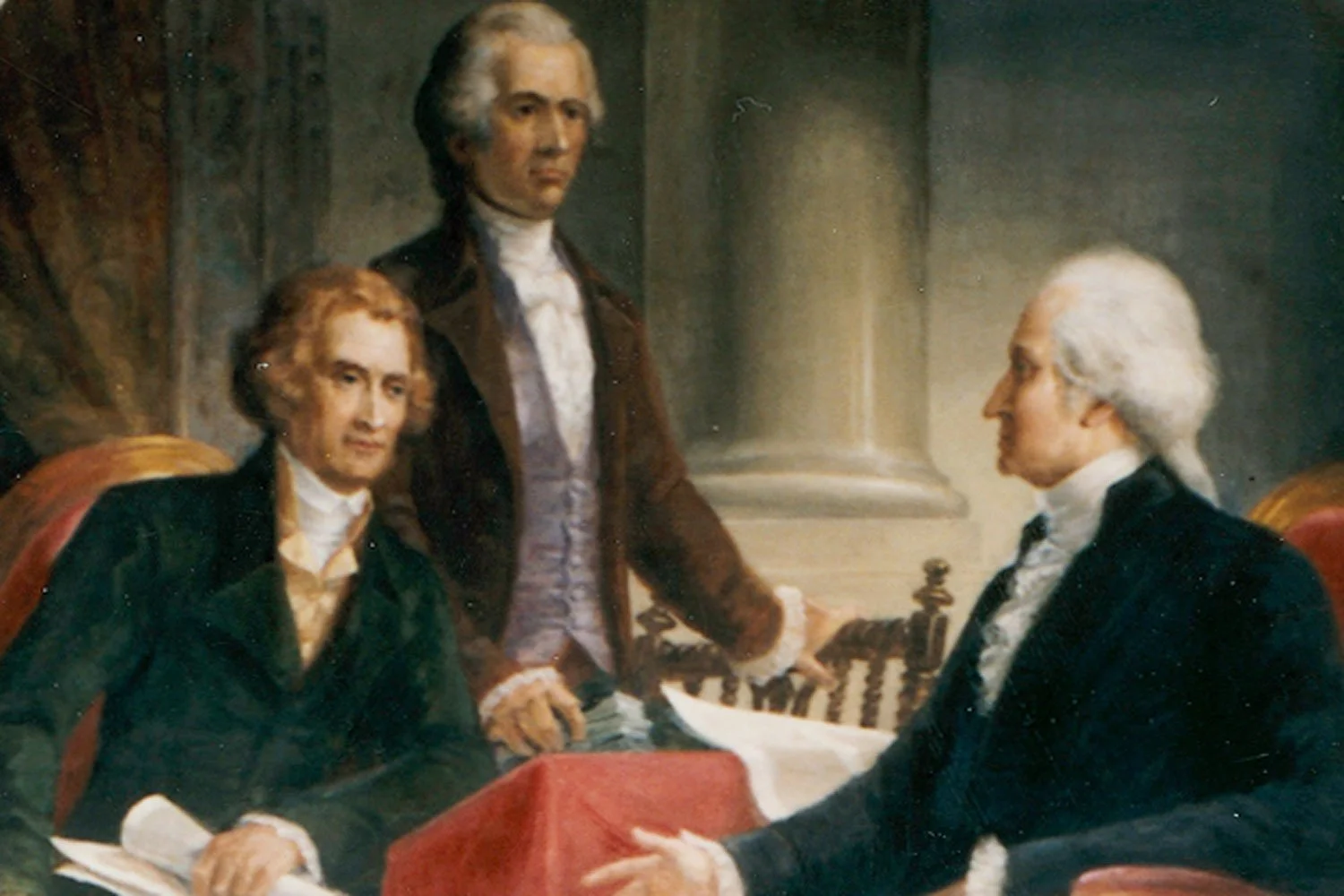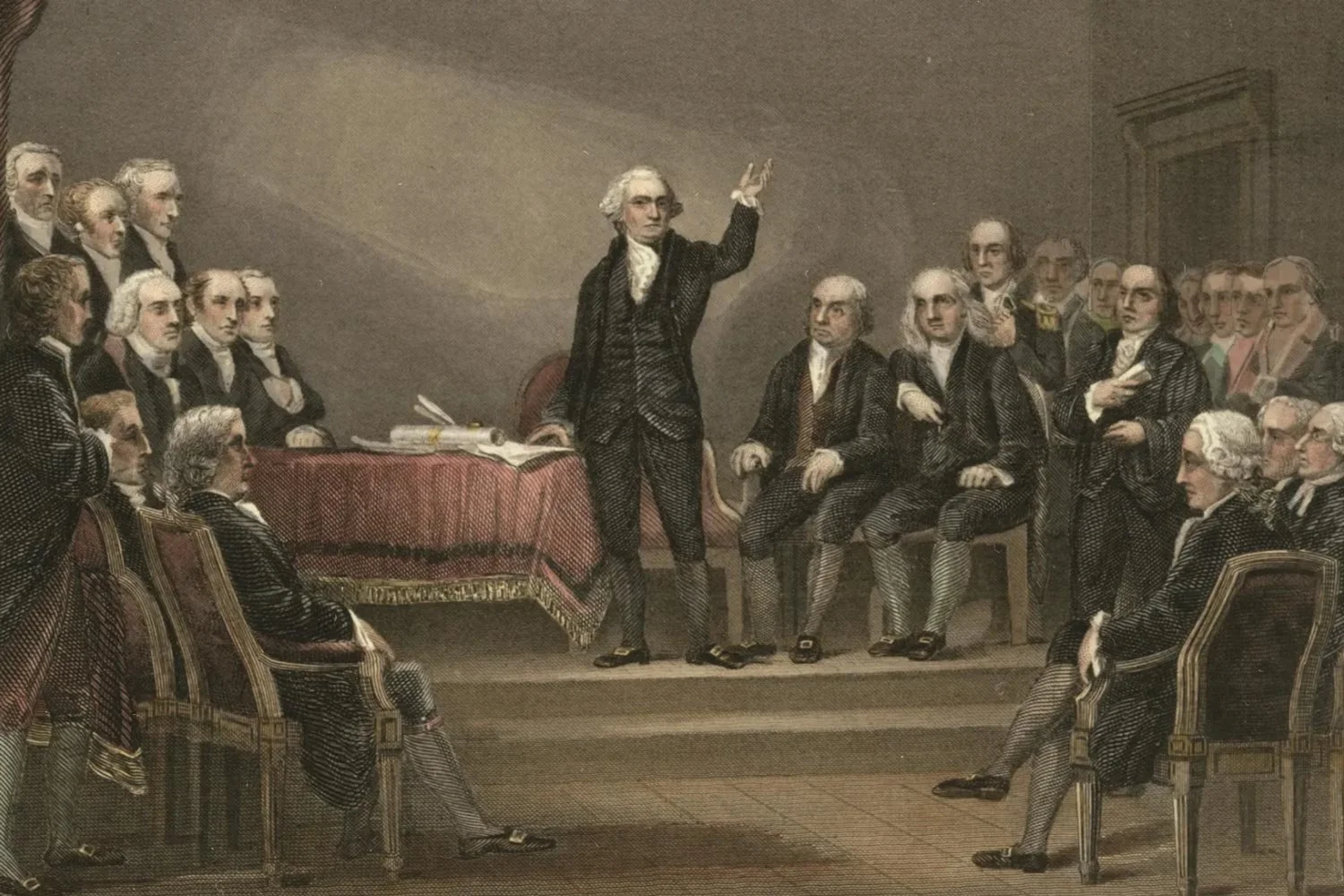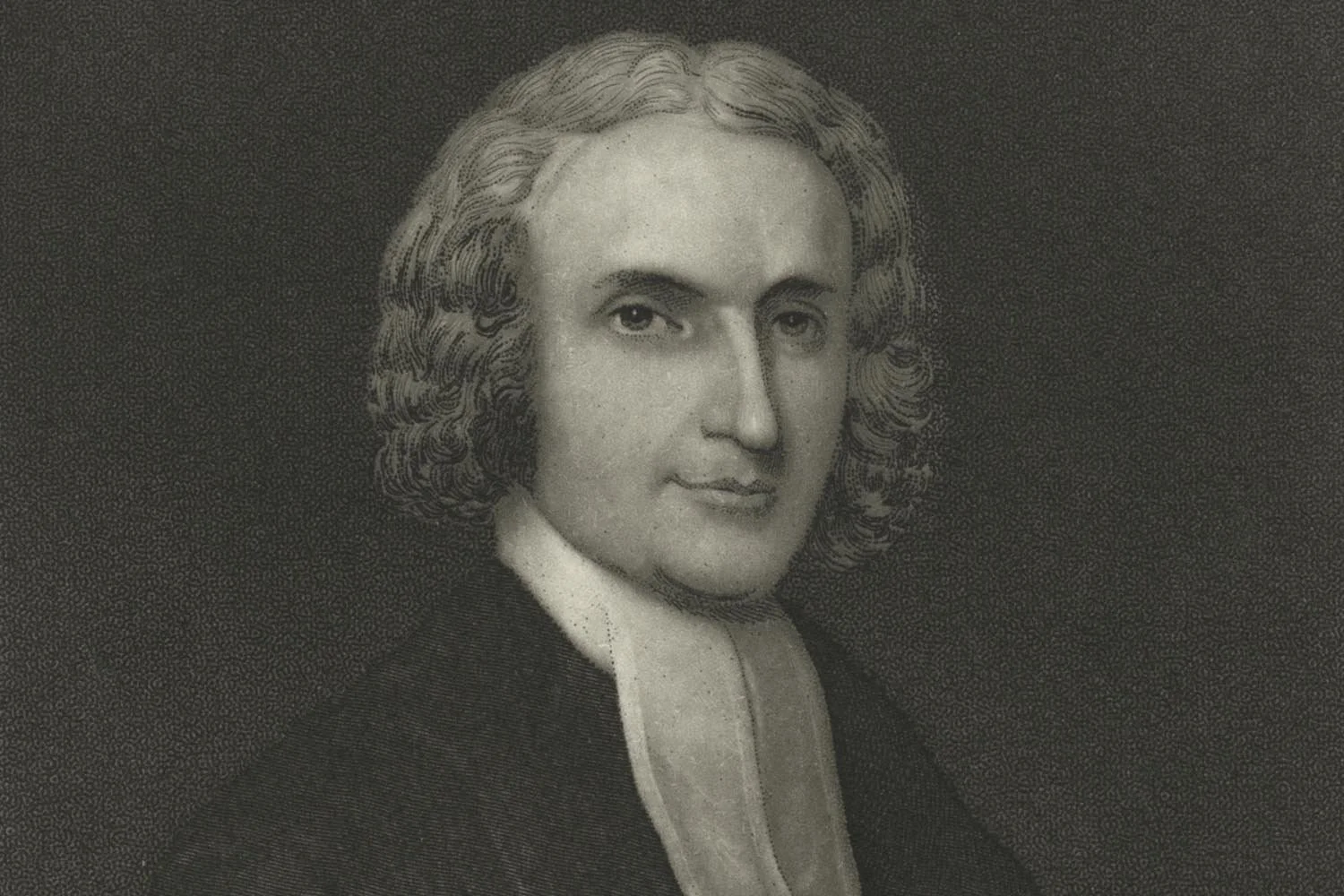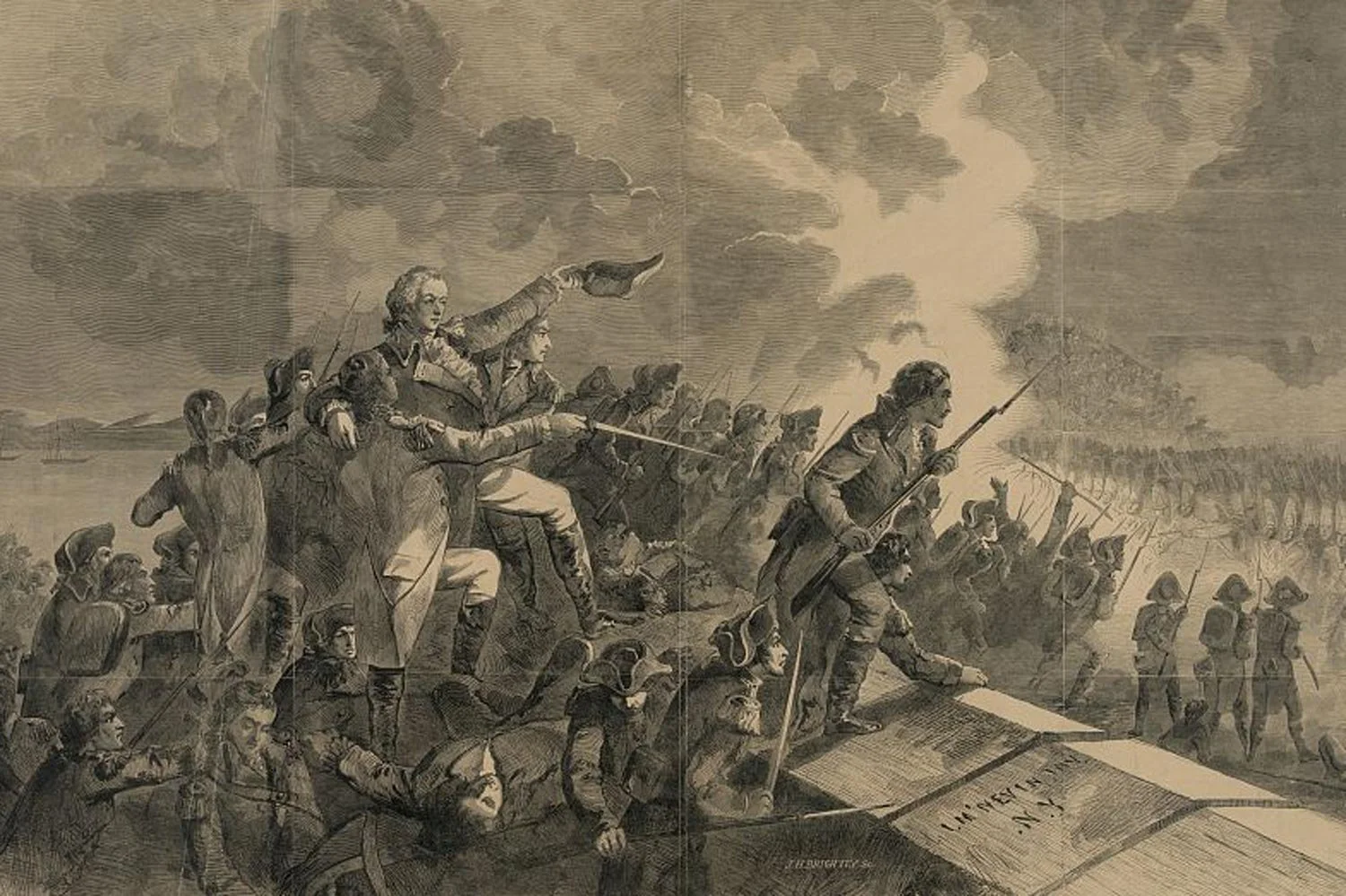Road to War, Part 7: Madison Changes Sides
In February 1789, James Madison was elected to the House of Representatives for the first Congress under the Constitution. Besides leading the House, Madison helped shape the Washington administration, drafting President Washington’s inaugural address and recommending Alexander Hamilton for Secretary of the Treasury and Thomas Jefferson for Secretary of State. But a break soon developed between the Madison-Jefferson faction, known as Democratic-Republicans, and Washington’s Federalist administration over Hamilton's plan for the national government to assume state debt incurred during the war.
Road to War, Part 6: James Madison, Father of the Constitution
In 1787, James Madison and Alexander Hamilton organized the Constitutional Convention not simply to fix flaws in the Articles of Confederation but rather to create a new vibrant national government under which the United States could flourish. The most critical issue to be resolved was how representation in Congress would be determined, for with more representatives came more power. Madison’s Virginia Plan comprised fifteen resolutions that became the basis for our constitution and called for representation according to population in both the House and the Senate. After the convention, Madison, along with Alexander Hamilton and John Jay, drafted eighty-five essays known as The Federalist Papers, the greatest collection of writings ever on a federal constitutional government. No other Founding Father played such an outsized role in creating our nation’s Constitution.
Road to War, Part 5: James Madison Embraces the American Cause
In 1774, Parliament passed the Coercive Acts, which effectively shut down the city of Boston and revoked the historic charter of Massachusetts, replacing it with royal authority. This affront to the liberties of American colonists greatly troubled Madison and pushed him into the camp of American separatists, and it was here that Madison found his true calling and to which he would devote the rest of his life. Madison was elected to the Confederation Congress, where his brilliant mind and extraordinary work ethic soon gained the young Virginian the admiration of his fellow congressmen and made him a leader in the national assembly.
Road to War, Part 4: The Early Life of James Madison
James Madison was one of our nation’s most important founding fathers and played a critical role in the shaping United States. Known to history as the “Father of the Constitution,” Madison’s brilliant mind was among the finest the nation has ever produced and his grasp of the theories of republican government and his efforts to implement those theories were unparalleled.
Road to War, Part 3: President Jefferson Declares Economic War
When the Democratic-Republicans came to power in 1800, the Jefferson administration effectively shut down and disbanded both the United States Army and Navy. As a result, when American merchant ships were illegally seized as contraband of war by both the British and the French during the Napoleonic wars, the United States was helpless to respond. Consequently, President Jefferson, who was philosophically opposed to war, decided to strike back economically rather than militarily.
Road to War, Part 2: The Chesapeake-Leopard Affair
In June 1807, several British sailors deserted from Royal Navy ships stationed near Norfolk, Virginia, and signed on with the USS Chesapeake, a 50-gun frigate commanded by Captain James Barron that was preparing to sail to the Mediterranean. Admiral George Berkeley, who commanded the British fleet in North American waters, was frustrated at the repeated desertions and sent word via the British frigate Leopard, commanded by Captain Salusbury Humphreys, to the British squadron to detain and search the Chesapeake for deserters. On the morning of June 22, Captain Humphreys had a message delivered declaring that there were deserters on board the Chesapeake and requesting permission to inspect the crew. Captain Barron denied the request, and the Leopard then fired two warning shots across the bow of the Chesapeake. Two minutes later, the Leopard poured a full broadside of solid shot and canister at point blank range into the helpless American frigate.
Road to War, Part 1: The Causes of the War of 1812
The War of 1812 has been called the “second American Revolution,” but the facts do not fully support that assertion. It is true that in both cases America’s enemy was Great Britain and the main catalyst that took us to war was American anger resulting from British transgressions, but the road to this second fight between these two countries was largely an unintended consequence of the almost continuous war that raged from 1793 to 1815 between England and France.
American Judiciary, Part 11: The Legacy of John Marshall
John Marshall is arguably the most influential man in American history who was never elected president. For more than three and a half decades as the chief justice of the Supreme Court, Marshall oversaw the creation of the American judiciary and established that it is the responsibility of the courts to say what the law is. John Adams, who appointed Marshall as chief justice, stated, “my gift of John Marshall to the people of the United States was the proudest act of my life.” Marshall’s decisions seemed to always have a view towards establishing a strong central government and strengthening the bonds necessary to create a nation, building those ties that allowed our country’s disparate parts to function as one.
American Judiciary, Part 10: The Treason Trial of Aaron Burr
On May 22, 1807, Aaron Burr was brought before a grand jury in Richmond, Virginia, charged with committing treason against the United States. The prosecution’s star witness, General James Wilkinson, proved to be a liability as Wilkinson was forced to admit that he had forged a letter from Burr which was the prosecution’s main piece of evidence. Regardless, the grand jury, made up mostly of Democratic-Republicans, indicted Burr for treason, the only time in our country’s history when a President or Vice President has been indicted for this crime.
American Judiciary, Part 9: The Burr Conspiracy
In the presidential election of 1800, Aaron Burr and Thomas Jefferson tied for the most electoral votes, but Burr refused to stand aside for Jefferson. The House of Representatives ultimately selected Jefferson to be president and Burr vice president, but Burr’s decision to challenge Jefferson made him an arch enemy of the president and an outcast in the Democratic-Republican party. Upon leaving office in the spring 0f 1805, Burr was a ruined man, financially and politically, with his reputation in tatters.
American Judiciary, Part 8: The Impeachment of Samuel Chase
Samuel Chase is the only Supreme Court Justice in our nation’s history to be impeached and that occurred during a political tussle over the independence and power of the judiciary between President Thomas Jefferson and Chief Justice John Marshall. In March 1804, the House of Representatives, in a party line vote, approved eight charges of impeachment against Chase. The problem was that the Constitution states that civil officers like Supreme Court justices may only be removed for “Treason, Bribery, or other high Crimes and Misdemeanors” and Chase was not charged with any of these. But that was just the point; the Chase trial was part of a larger Democratic-Republican plan to reduce the power and independence of the judiciary.
American Judiciary, Part 7: Marbury v. Madison
On March 2, 1801, two days before leaving office, President John Adams submitted to Congress a list of fifty-eight names, all Federalists, to fill positions created by the recently passed Judiciary Act. But Secretary of State John Marshall was unable to fill all the commissions before Thomas Jefferson was sworn in as president on March 4. Jefferson directed his secretary of state, James Madison, to not deliver the remaining commissions, one of which was for a justice of the peace position for William Marbury. Marbury then sued requesting the Supreme Court issue a writ of mandamus which is a court order that compels a government official to perform a legally appointed task. On February 24, 1803, John Marshall, who was now the chief justice of the Supreme Court, issued his landmark ruling.
American Judiciary, Part 6: The Nationalist from Virginia
In 1780, John Marshall spent just six short weeks studying law under George Wythe at the College of William and Mary before leaving school and obtaining his license to practice law in the state of Virginia. Within a few years, Marshall’s intelligence and charm had established him as one of the finest attorneys in Richmond. He was elected to the Virginia House of Burgesses and became one of the leading conservatives in the state and helped lead the fight in Virginia to ratify the Constitution. By 1798, Marshall began a run of nearly forty years of continuous service to his country, during which this devoted Patriot served in all three branches of government, one of only a handful of men to ever do so.
American Judiciary, Part 5: John Marshall, Soldier of the Revolution
Soon after Lexington and Concord, John Marshall joined the Culpepper Minutemen and on December 9, 1775, received his first taste of war at the Battle of Great Bridge. The following summer, Marshall received a commission as a lieutenant in the Eleventh Virginia Regiment, beginning a four-year stint in the Continental Army. By all accounts, Marshall was an outstanding junior officer, a great leader of men and an inspiration for all those who served with him. It was through this crucible of war that Marshall’s deep sense of nationalism was formed, a nationalism that would shape all his decisions in the years to come.
American Judiciary, Part 4: The Early Life of John Marshall
John Marshall is perhaps the most impactful and influential man in American history who was never president. Almost single handedly, Marshall created our national judiciary and established it as a branch of government co-equal to the legislative and executive branches. He was born on September 24, 1755, on the western frontier of the colony of Virginia and was raised in a frontier two-room log cabin, which he shared with his parents and numerous siblings. Obtaining an education on the frontier of Virginia was difficult and John had received less than two years of formal instruction. And except for a short six-week stint at the College of William and Mary studying law under George Wythe, that was all the schooling Marshall would ever receive.
American Judiciary, Part 3: Last Bastion of the Federalists
Near the end of his single term in office, President John Adams signed into law the Judiciary Act of 1801 to enact much needed judicial reform but also to solidify the judiciary as a Federalist bastion against the seismic changes in government expected from Thomas Jefferson’s Democratic-Republicans. Naturally, when Jefferson was sworn in as president and his Democratic-Republicans took over both houses of Congress, they moved quickly to reverse Adams’ judiciary measures.
American Judiciary, Part 2: An Independent Federal Judiciary
One of the first pieces of legislation crafted in the first Congress was the Judiciary Act of 1789, signed into law by President George Washington on September 24. This act established that “The supreme court of the United States shall consist of a chief justice and five associate justices” and that it would meet in two sessions each year in the nation’s capital.”
American Judiciary, Part 1: Courts in Early America
In Colonial America, because judges were appointed and paid for by the Crown, they were seen as an extension of Royal authority and its tyranny. Consequently, as states created their own constitutions after 1776, most gave the power to appoint judges to the legislature.























